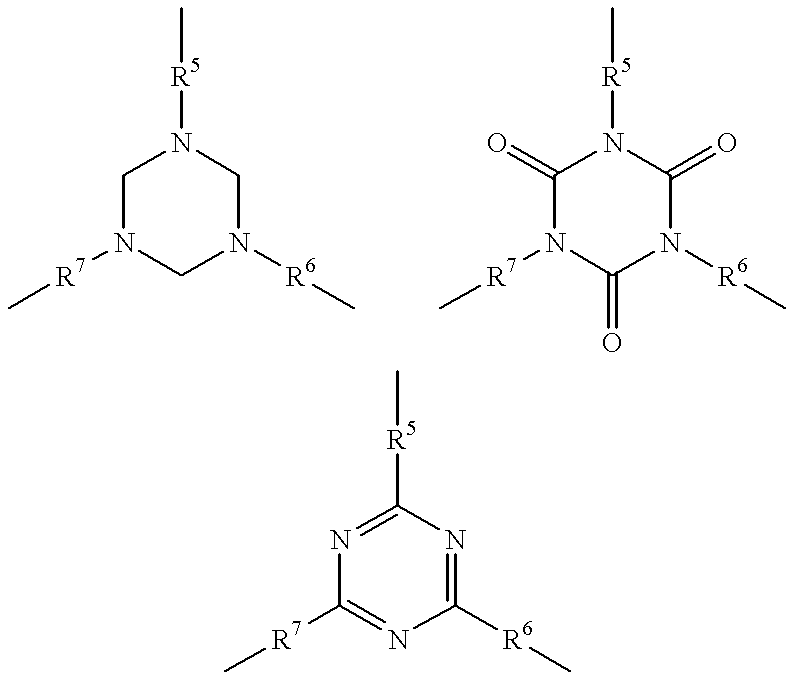Process for fluorinating cellulosic materials and fluorinated cellulosic materials
- Summary
- Abstract
- Description
- Claims
- Application Information
AI Technical Summary
Problems solved by technology
Method used
Image
Examples
example 1
A cotton cloth (a woven fabric made of yarn having a gauge of 40) (2 cm.times.2 cm) (0.59 g, 3.64.times.10.sup.-3 mol) as a raw cellulose material, driedKF (Krocat-F, manufactured by Morita Kagaku Co., Ltd.) (0.845 g, 1.3 equivalents per 1 equivalent of OH group of the cellulose material) and 50 ml of acetonitrile were charged in a 100 ml autoclave. After the autoclave was cooled to 0.degree. C. under a nitrogen atmosphere, 16 g of hexafluoropropene (10 equivalents per 1 equivalent of OH group of the cellulose material) was gradually introduced. After the completion of the introduction of hexafluoropropene, the autoclave was once heated to 50.degree. C. It was confirmed that rapid heat evolution did not occur, and then the autoclave was heated to 80.degree. C. and the reaction was conducted for 1 hour. After the completion of the reaction, the sample was washed six times with purified water and HCFC-141b, respectively, and air-dried for 24 hours.
The contact angle, water content and ...
examples 2 and 3
Except that 50 ml of dimethyl sulfoxide (Example 2) and 50 ml of dimethylformamide (Example 3) were used instead of acetonitrile as the solvent, the same procedure as in Example 1 was repeated. The results are shown in Tables 1 and 3.
example 4
Except that 50 ml of dimethylformamide instead of acetonitrile as the solvent and 63 g of polyfluoroalkyl acrylate [CF.sub.3 CF.sub.2 (CF.sub.2 CF.sub.2) .sub.n CH.sub.2 CH.sub.2 OCOCH.dbd.CH.sub.2, n is an integer of 3 to 10] instead of hexafluoropropene as the fluorine-containing compound was used and the reaction was conducted at the reaction temperature of 120.degree. C. for the reaction time of 30 hours, the same procedure as in Example 1 was repeated. The results are shown in Tables 1 and 3.
PUM
| Property | Measurement | Unit |
|---|---|---|
| Contact angle | aaaaa | aaaaa |
| Contact angle | aaaaa | aaaaa |
| Contact angle | aaaaa | aaaaa |
Abstract
Description
Claims
Application Information
 Login to View More
Login to View More - R&D
- Intellectual Property
- Life Sciences
- Materials
- Tech Scout
- Unparalleled Data Quality
- Higher Quality Content
- 60% Fewer Hallucinations
Browse by: Latest US Patents, China's latest patents, Technical Efficacy Thesaurus, Application Domain, Technology Topic, Popular Technical Reports.
© 2025 PatSnap. All rights reserved.Legal|Privacy policy|Modern Slavery Act Transparency Statement|Sitemap|About US| Contact US: help@patsnap.com

